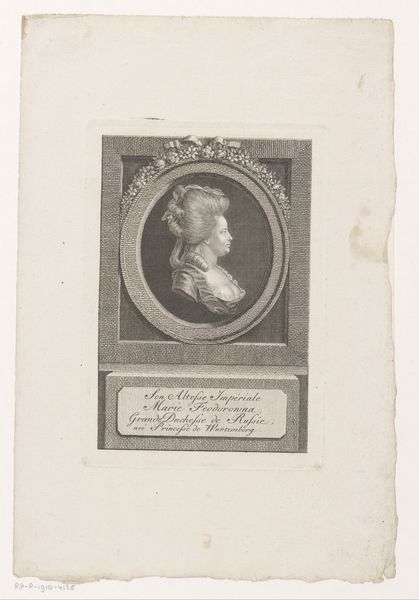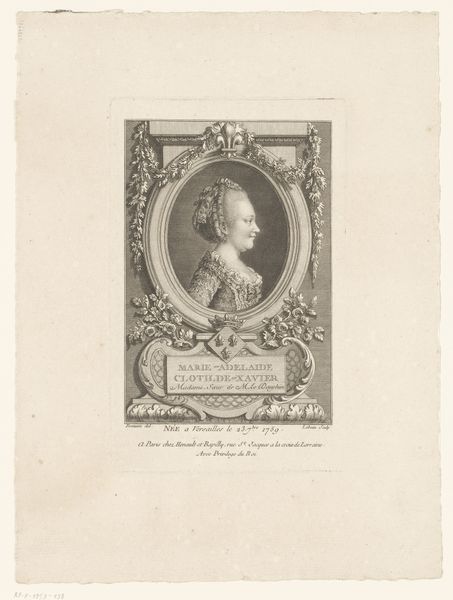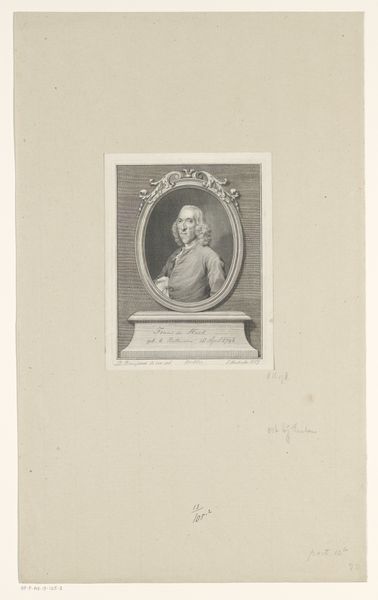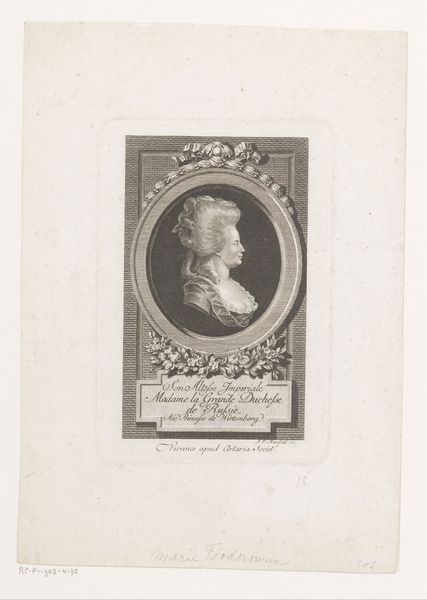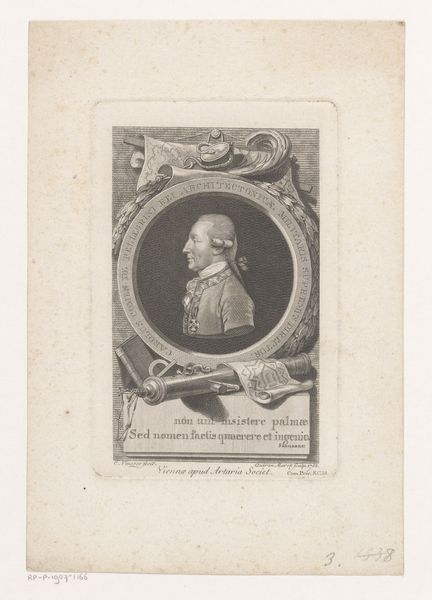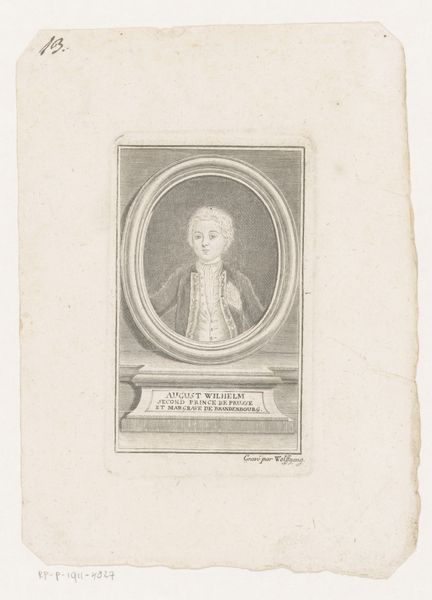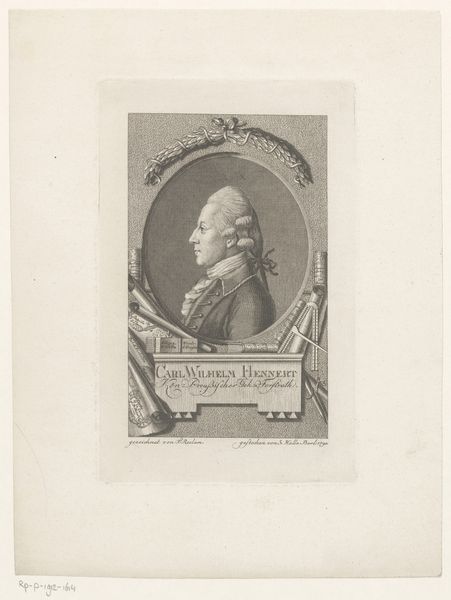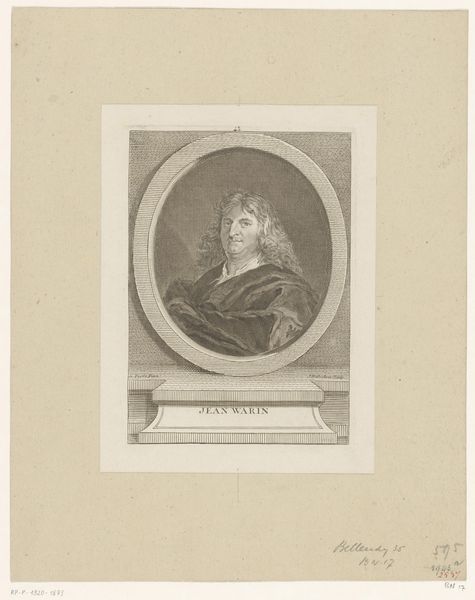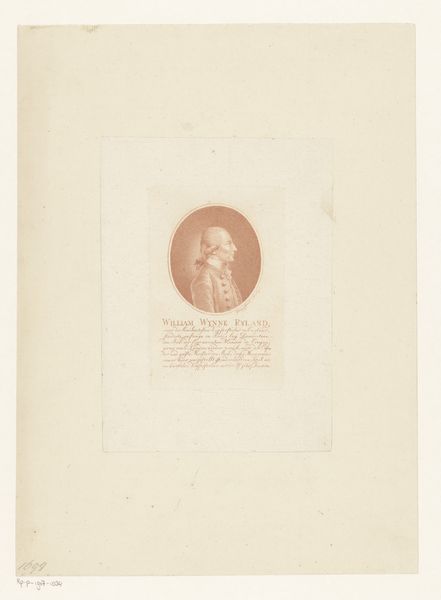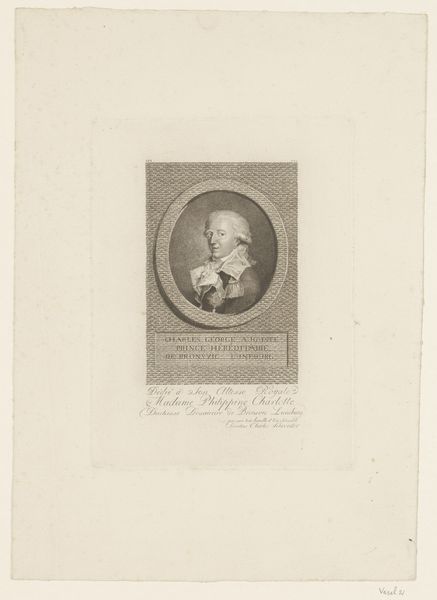
Portret van Friedrich Heinrich Ludwig van Pruisen 1736 - 1802
0:00
0:00
johannchristiangottfriedfritzsch
Rijksmuseum
Dimensions: height 99 mm, width 62 mm
Copyright: Rijks Museum: Open Domain
Editor: Here we have a portrait of Friedrich Heinrich Ludwig van Pruisen, created sometime between 1736 and 1802 by Johann Christian Gottfried Fritzsch. It's a Baroque engraving. What I immediately notice is how small and contained it feels, almost like a stamp, despite depicting a royal figure. What do you see in this piece? Curator: This portrait offers us a fascinating lens through which to examine the construction of power and identity within the Prussian court. While seemingly conventional, consider the act of reproducing this image via printmaking. Who had access to these prints, and how did they function to disseminate an idealised version of Prussian leadership? Was this about fostering a sense of connection or enforcing a specific hierarchy? Editor: That's a great point. I hadn't thought about the distribution of the image itself. Curator: And how does the sitter's attire, specifically his armour, contribute to that visual message? Is it solely about military might, or does it evoke classical ideals of leadership and duty? The Baroque style, with its inherent theatricality, often served to mask and manipulate underlying social tensions. Do you see evidence of that tension here? Editor: I see your point. There’s something performative about it all, this carefully constructed image for public consumption. But perhaps the relatively small scale of the print undercuts some of that grandeur? Curator: Exactly! It's a paradox. While meant to project power, its intimacy also offers the possibility for closer inspection and potentially, subversion of that message. Reflect on how visual strategies—style, materials, size—shape political and social narratives. What do you think this teaches us about images of power today? Editor: I never thought about an image like that. Thanks for opening my eyes to it. Curator: Likewise! Considering historical context helps us to see beyond the surface representation and engage with the complex social dynamics embedded within seemingly simple portraits.
Comments
No comments
Be the first to comment and join the conversation on the ultimate creative platform.
